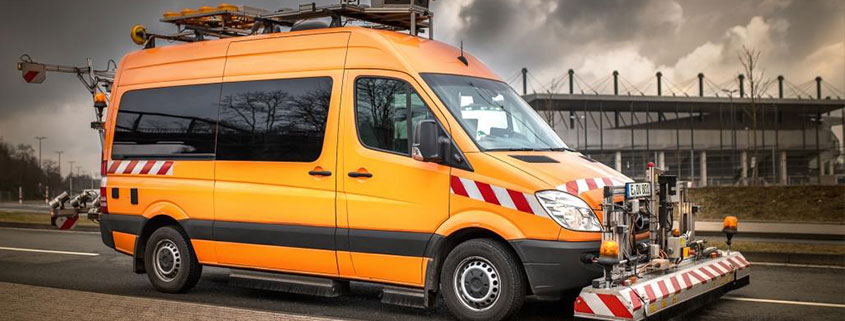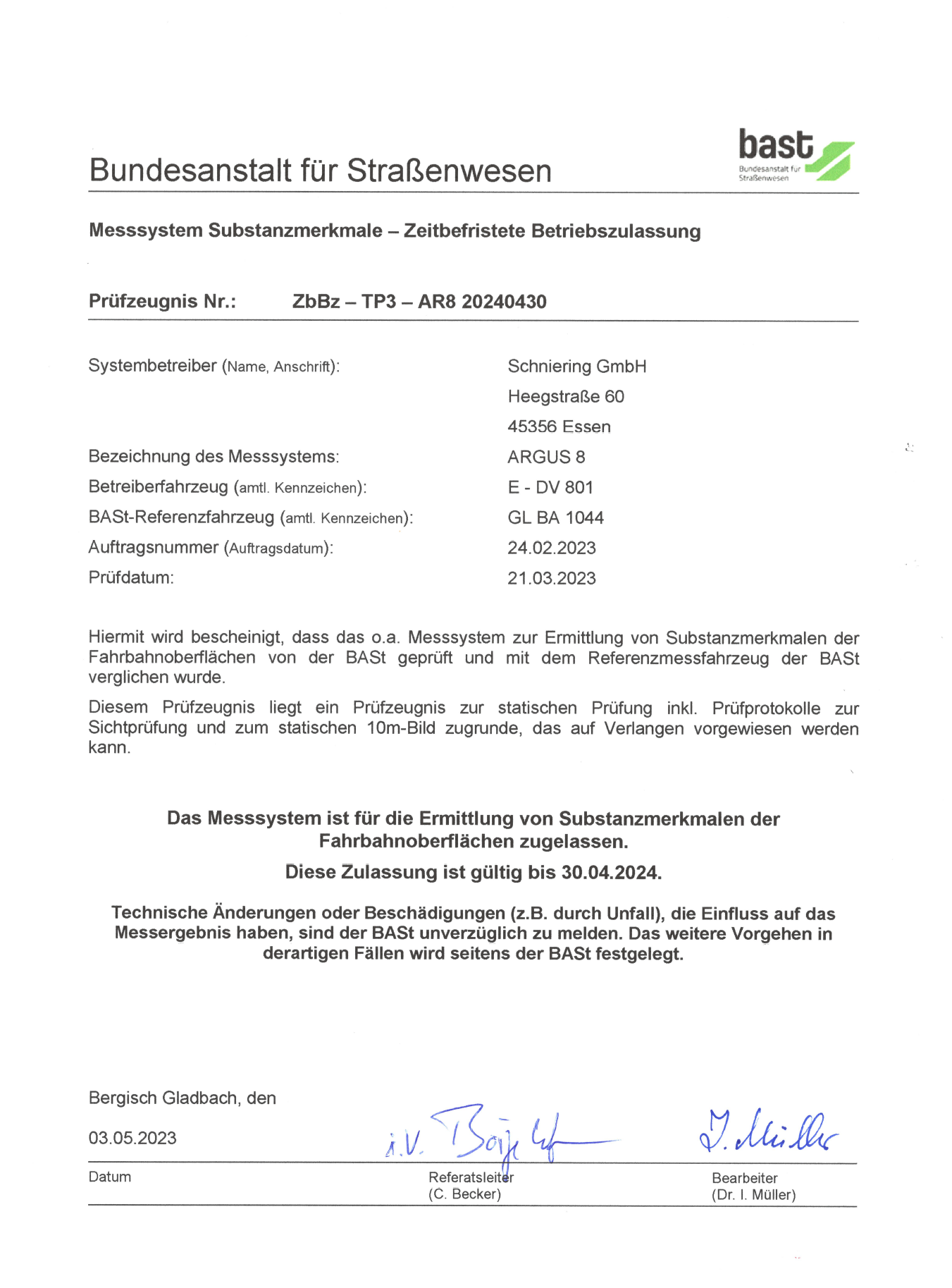MEASUREMENT SYSTEM ARGUS®
Our multifunctional ARGUS® measuring systems are mainly used for network-wide condition monitoring. The range extends from the municipal secondary road network to motorway inspection. Other applications include functional tests within the scope of PPP contracts or the object-related recording of individual substance characteristics such as longitudinal evenness within the scope of the acceptance of new construction or maintenance measures.
The vehicle is designed in such a way that the individual use of the sub-systems is given by the functional separation and thus, in the context of minimising effort, only the relevant values need to be recorded.
Our ARGUS® measuring systems are certified annually by the German Federal Highway Research Institute (BASt).
The ARGUS® measuring system has the following sub-systems for condition monitoring:
- Longitudinal evenness measuring system according to the HRM method in accordance with the requirements of the “TP-Eben Berührungslose Messungen” in the right and left rolling lane by means of high-precision individual lasers which work according to the triangulation method (sub-project 1a according to ZTV ZEB-StB).
- Transverse evenness measuring system according to the requirements of the “TP-Eben Berührungslose Messungen” with measuring widths of 2.4 to 3.6 metres by means of high-precision triangulation lasers (subproject 1b according to ZTV ZEB-StB) Triangulationslasern (Teilprojekt 1b gemäß ZTV ZEB-StB)
- High-resolution, orthogonally aligned camera with artificial lighting for recording images of the carriageway surface with a recording width of 4.5 metres (sub-project 3 in accordance with ZTV ZEB-StB).
- High-resolution front, side and rear cameras with special aperture control for fast-moving recording of videos or individual images of the road space (route images)
- Highly clocked laser sensors for recording the macrotexture in the left and right rolling lane of the vehicle
The measuring system can be used to record the condition of the road at speeds of up to 100 km/h. Due to the built-in safety devices according to DIN 30 710 and HSM 2000, the vehicle is intrinsically safe. The detection itself is completely speed-independent thanks to a powerful trigger system in conjunction with a network structure that connects the individual subsystems with each other. Traffic obstructions are avoided as far as possible by “swimming” with the traffic.
The data and images recorded by the ARGUS® measuring system in a metrological and thus objective manner represent an essential basis for:
- the provision of network-wide condition information as objective baseline information for short-, medium- and long-term conservation decisions.
- the optimised use of increasingly limited resources
- transparent decisions within building administrations as well as in external presentation
- Control over the effect of measures and the effect of their delays
- the forecast of the future network condition
- the practical findings on the success/failure of types of measures and building material concepts in conservation
In order to enable the true-to-position mapping of the captured data and images onto the digitised road network, a high-precision position detection system using the GNS system (Global Navigation Satellite System) is integrated into every measuring system. Coupled with distance measurement via a rotary encoder, standard accuracies of typically ± 0.5m are achieved. Using correction data from reference stations, this accuracy can be improved into the sub-centimetre range in post-processing if required.
In addition to the pure position data, the GNS system also provides position data of the vehicle, which is used to calculate the longitudinal and lateral inclination, among other things.
The recorded measurement data are evaluated and assessed according to the order-specific specifications and taking into account individual concerns, usually on the basis of regulations such as ZTV ZEB-StB , the VSS standards or also METHODE D’ESSAI LPC, and are usually handed over to the client in the following formats:
- Raw geodata / raw raster data according to the format definition of the Federal German Highway Research Institute (BASt)
- Map-Info Relation
- shapefile
- Visualised in STRADIVARI®
- Result file on CSV, Excel or dBase basis
- State maps / strip maps / raw data strip maps in digital and printed form
The corresponding image data is transferred to an image database in the specified storage system on data media.



